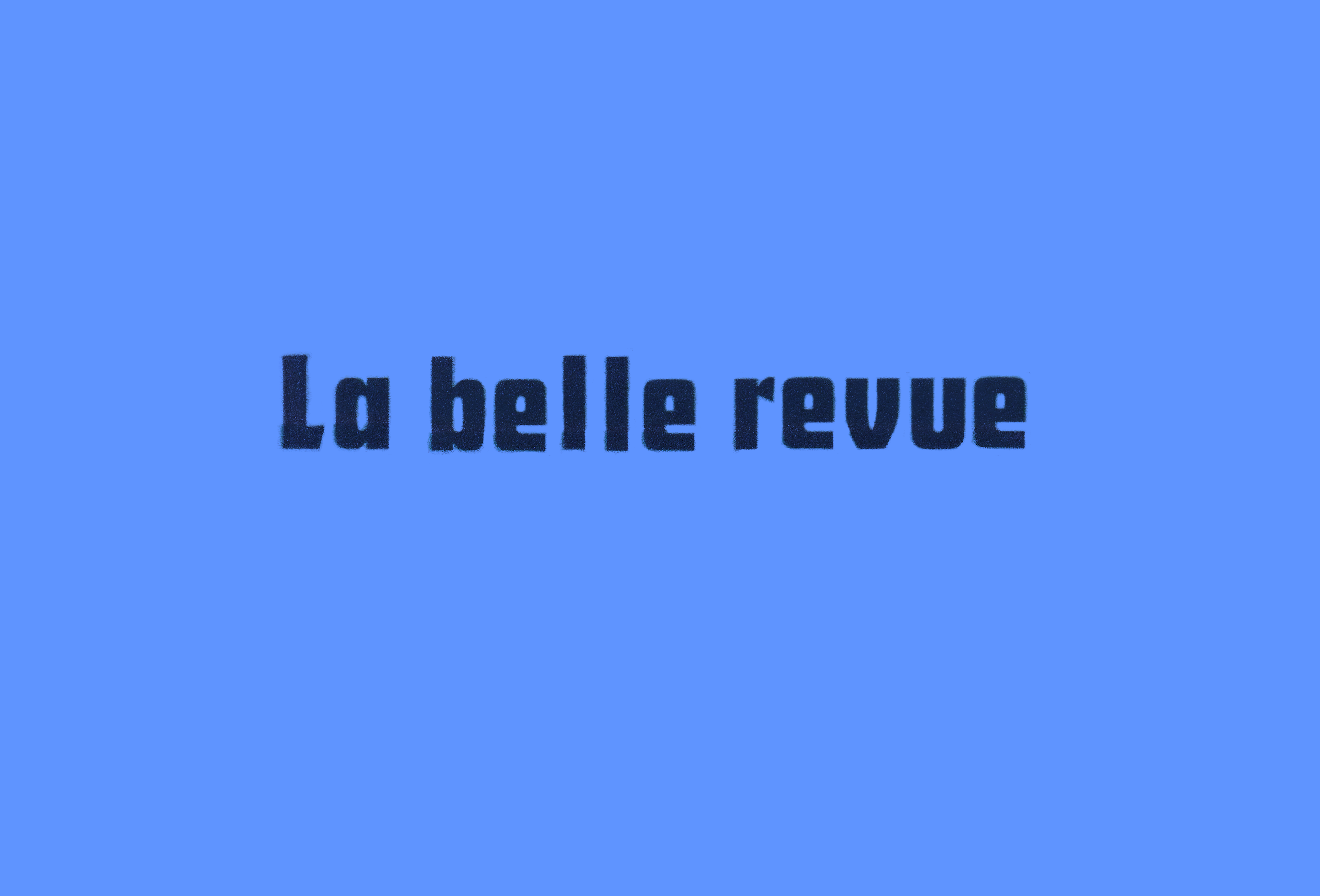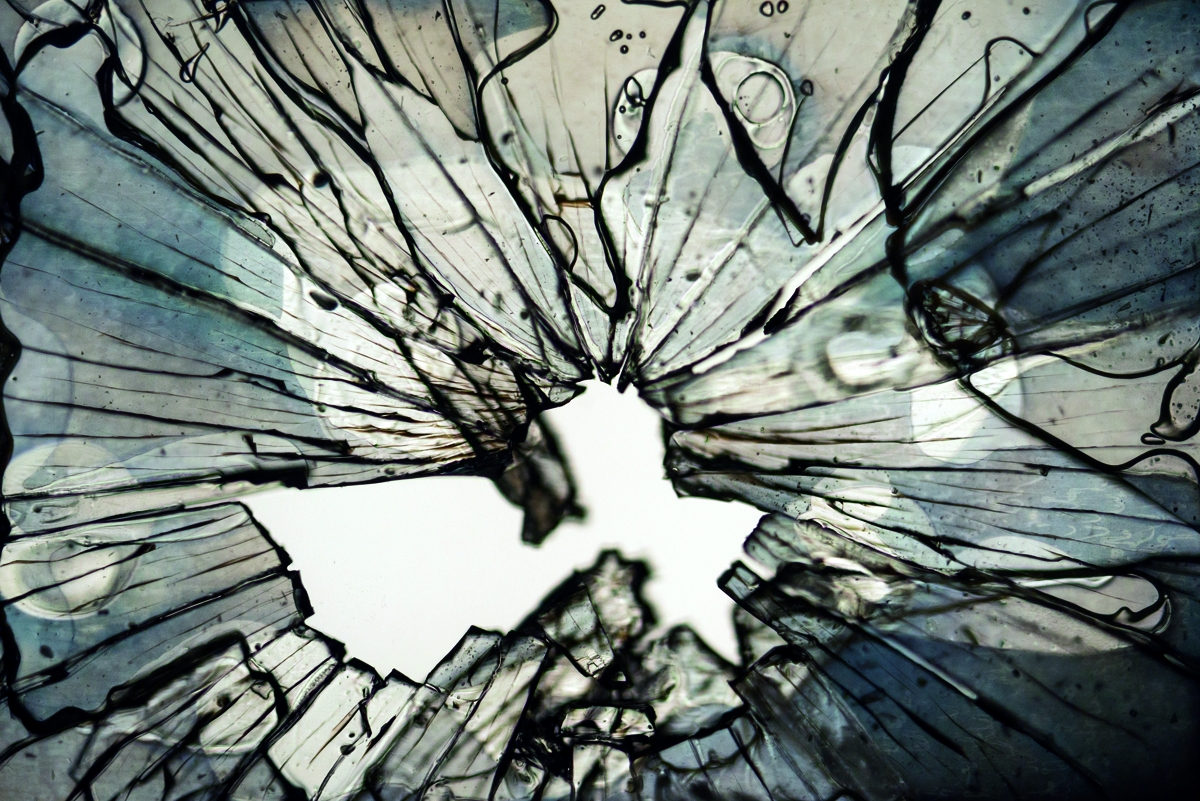The Assaut de la Menuiserie presents "Blank", a monographic exhibition by Juliana Borinski.
When she works on photography or cinema, Juliana Borinski never uses a camera or video camera. She creates images that are generally abstract, using photosensitive paper or film directly, in order to explore their inherent aesthetic and technical abilities. What should only be a receptacle for images, its medium, thus becomes the very material of her work.
Series from the color dark room 1 is a series of colour photograms (or rayograms) produced in 2013 at the Rodchenko Academy in Moscow. In the darkroom, the three colour filters – cyan, magenta, and yellow – are successively developed on photosensitive paper (a single colour per sheet). The papers are then cut out into basic geometric shapes and placed in turn onto blank photo paper. Another exposure is made, lasting five minutes, instead of the normal procedure of a few seconds. The light traverses the paper cutouts and the colours obtained on the new sheet of paper are the inversions of the first three, while the background is entirely black, burnt by the light. The compositions recall those of the Constructivists and their arrangements of geometric shapes, especially those of El Lissitzky, who also often experimented with the photogram. This interest in a history of forms is very present in Juliana Borinski’s work and particularly concerns Minimalism and Constructivism. She shares with these artists a perpetual interest in experimenting and exploring the possibilities of materials. Series from the color dark room 1, like many of her works, has been derived from a great deal of fruitless tests. In the darkroom, by distancing herself from the usual development protocol, the artist loses control and can only judge the result positive or otherwise at the end of the procedure.
A similar principle applies for the four printed images of the series In between humiliation and happiness, produced with the support of the Centre Photographique d’Île de France in 2013, but this time in black and white. The artist reworks a sheet of photosensitive paper that has been previously overexposed, then subjects it to various rubbings and folds before exposing it again on a new sheet. Photographic skeleton-like forms against a black background result from this: a typology of image-less photographs. The frontal and central presentation of the subject recalls the way in which Albert Renger-Patzsch presented his plants, except that here, the objectivity sought by the German photographer is completely denied in favour of chemistry. The photograph is brought back to its reality as an object, its primary state, still devoid of any imprint from the external world. The title of the series is a quote from Chris Marker, taken from his film Letter From Siberia (1957). The filmmaker is another important reference for Juliana Borinski, owing to her interest in history and memory, but also for his experimental use of his medium of choice. This history of media is central to the artist’s work. In a digitally obsessed era with its frenetic race for technological progress, she chooses to turn to the tools and procedures that are now in danger of becoming obsolete. Her approach is not a nostalgic one, but concerns knowledge and history. From a theoretical point of view, her activity refers to the thought of her mentor and former professor, Siegfried Zielinski, the father of the archaeology of media. It is by delving into this history from an interdisciplinary perspective, from its origins through to the most recent evolutions, that it is possible to acquire a sound understanding of what media has become today through its rampant profusion. For Zielinski, the important turning points of these evolutions of media are not found among the most well-known episodes in history, but in the margins, among the stakeholders that are occasionally forgotten, whose original contributions can serve as a mirror to the present.1
For Juliana Borinski, fewer and fewer photographers and filmmakers today know how a darkroom works or what working with film consists of. Her works are a tribute to these materials whose obsolescence has been announced. It is a kind of work of remembrance – what is photosensitive paper if not a memory sensor? The blank paper from the series of black and white photograms might represent this forgetting, this disappearance that is underway. Blank is also the title of the exhibition. This notion is suitably revealing of the artist’s work, since she does not proceed by substraction but rather through “blanks”. Each time, a part of the technique, phase, or element is lacking.
The installation Blank Volume 1 produced on site and presented here for the first time bears witness to this. It consists of a projector and eighty slides. The use of the material is once again unconventional, since there are no still images contained on these slides. Using a nail, Juliana Borinski carefully cracked each of the glass plates of the eighty slides. She then added several dots of glue, in order to maintain the cracks in place. With each new slide, the light projects a different and intriguing composition onto the wall, the result of the degradations previously inflicted and conserved for their artistic qualities. On the first slides, the dose of glue is greater than for the subsequent ones. When the light is projected onto it, the glue becomes black. The first slides end up covered in dark patches, unlike the following ones containing less glue. The light is not only used to project, but also for its ability to transform the images. As for her previous works, the artist uses it here as a bona fide tool. She uses it to create designs, through the properties of the materials used.
Juliana Borinski looks for errors, lacks and chance. She positions herself deliberately at the margins of the systems she uses, visual media, taking care to avoid images in the usual sense and new technologies, favouring the “next to nothing”. This unconventional approach is also apparent in the fact that each work is unique, in an era where copying an element can be achieved with a single click, and when the tools of her trade are photography and film – the heroes of the mechanical reproduction analysed by Walter Benjamin.





